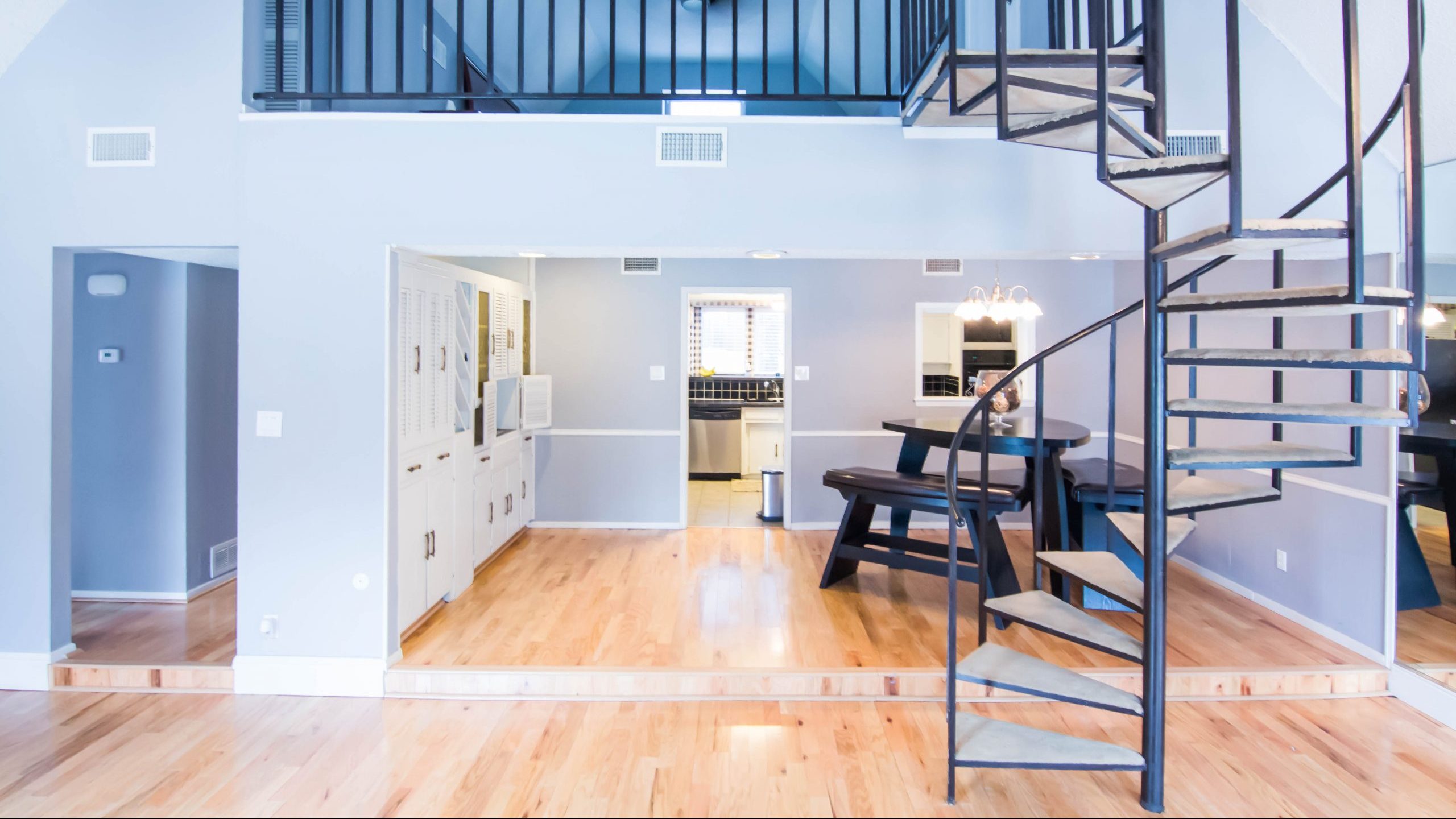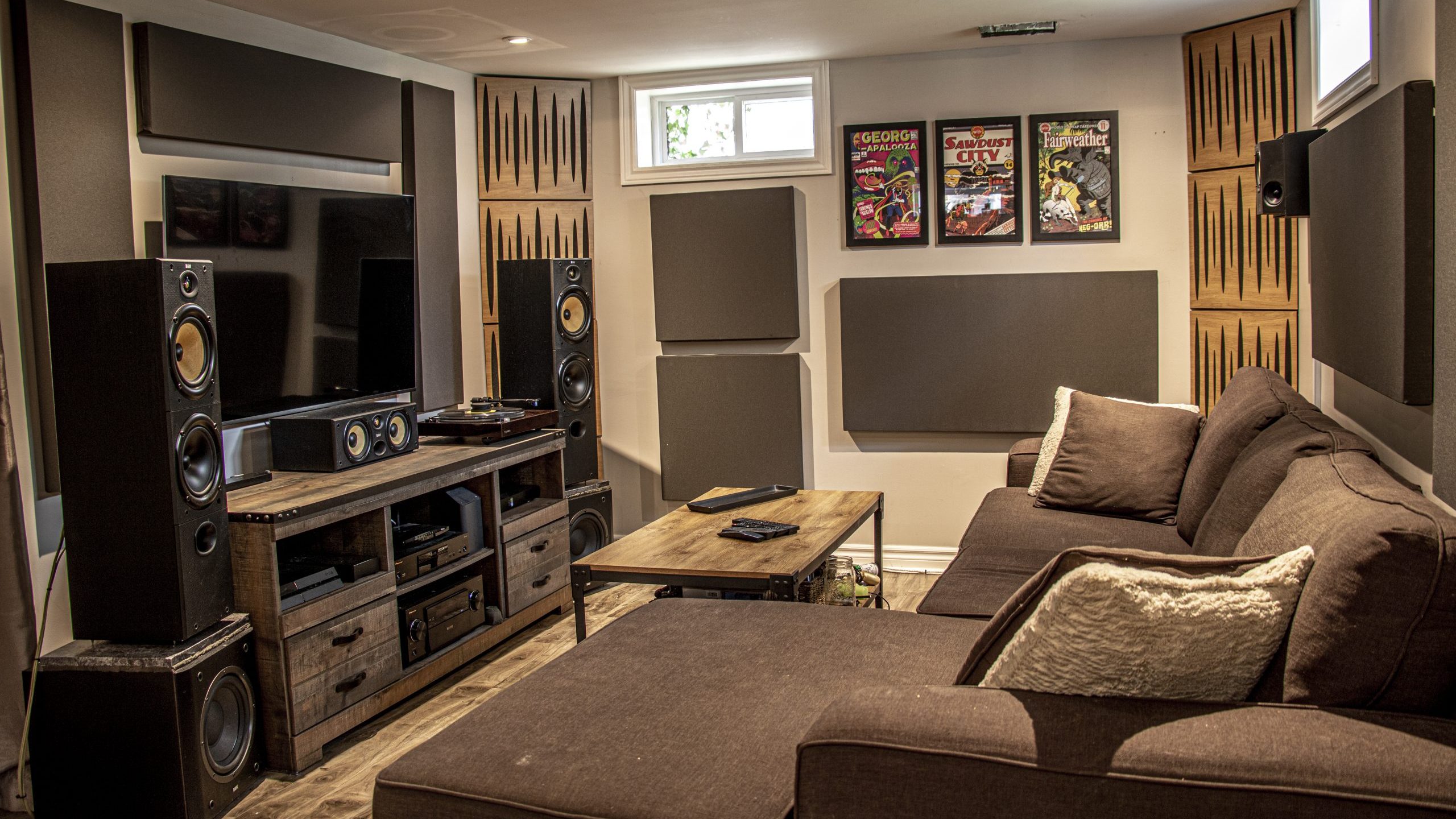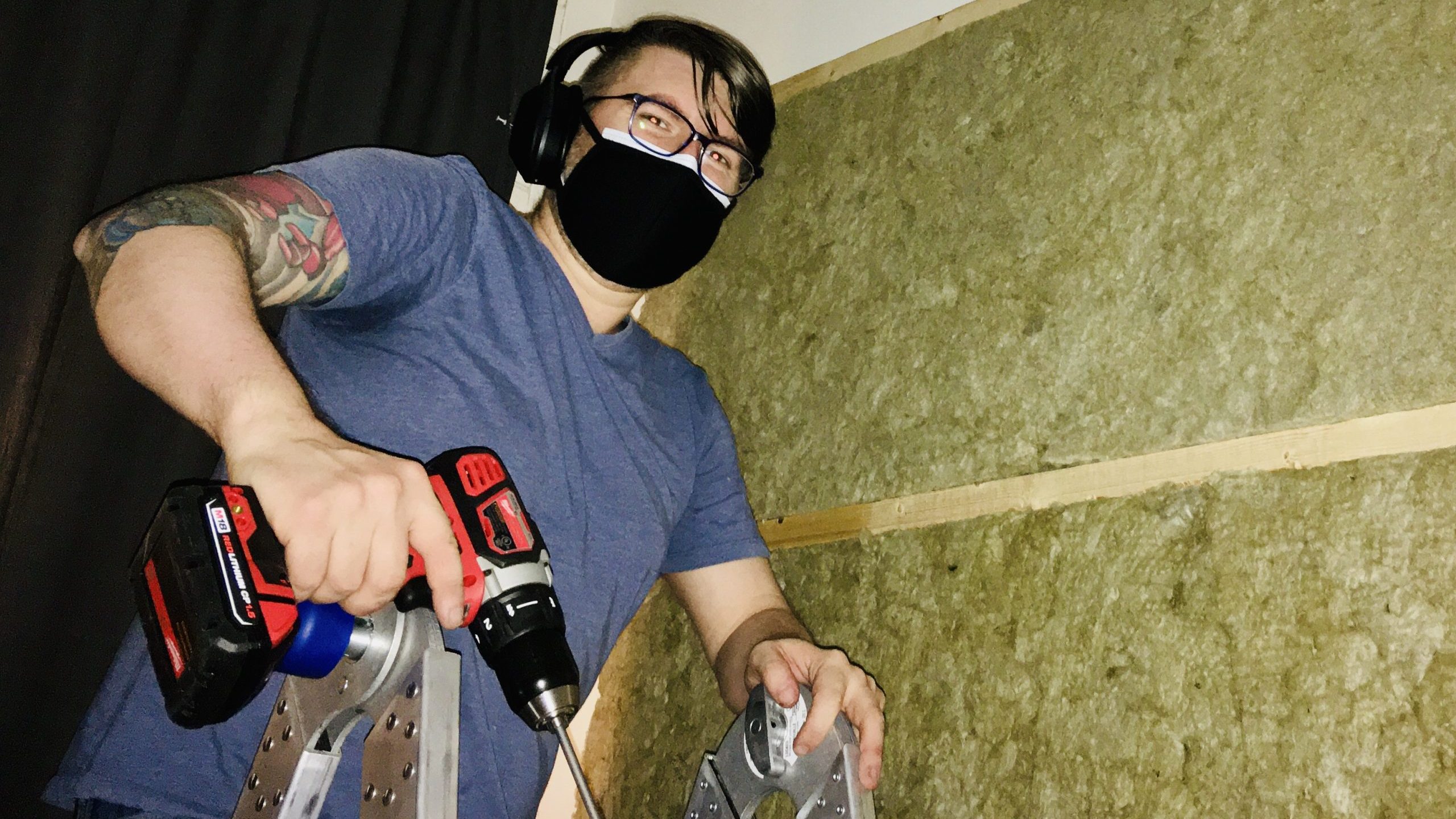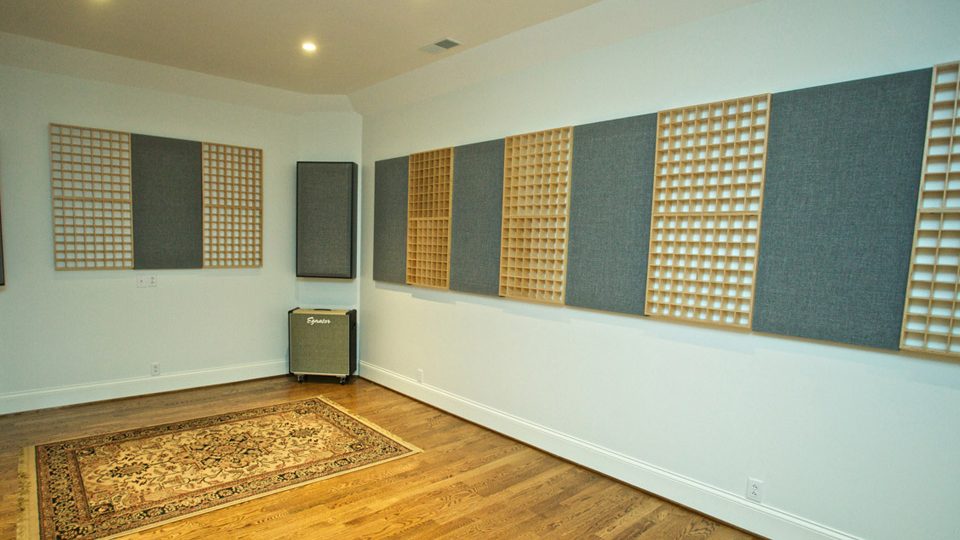All products featured are independently chosen by us. However, SoundGuys may receive a commission on orders placed through its retail links. See our ethics statement.
Soundproofing vs acoustic treatment: What's the difference?
April 28, 2021
Our acoustic environment is tremendously important: it affects our mood, our health, and our ability to do our jobs. When we’re indoors, the building itself and the room we’re inhabiting define our acoustic environment. With the right materials, we can influence that environment, but the hows and whys require a little knowledge. Soundproofing and acoustic treatment are two very different processes often confused for each other, but both can improve your acoustic environment in different ways.
Do you need soundproofing or do you need acoustic treatment?
Acoustic treatment and soundproofing are two different applications for two very different problems. Soundproofing basically refers to blocking noise. We all value peace and quiet, and our own privacy, and the reality is that everyone can benefit from soundproofing. If you’re lucky enough to live in a well-constructed building or live miles from your closest neighbor out in the country, you might not think of noise transmission as a problem. For most people, living in close proximity with others has likely caused anguish at some point, and unwanted sound is a big contributor to that.

Modern buildings are generally well constructed and effectively soundproofed to some extent, but they tend to feature large open interiors with flat, parallel, hard surfaces, which cause strong reflections, echoes, and lots of reverberation. This is where acoustic treatment comes in. Acoustic treatment isn’t as generally understood or sought after as soundproofing, but it makes spaces more pleasant to spend time in and is required for certain pastimes and vocations—especially for anyone working with sound.
How does soundproofing work and why would you need it?
At its most basic level, soundproofing is intended to prevent sound from entering or escaping from a space—this includes sound propagation between rooms. If external noise is disturbing you, you need soundproofing. This could be anything from vehicle noise, construction, lawnmowers, air conditioners, home entertainment, music rehearsals, dogs, noisy neighbors, raised voices, or doors slamming.

If you’re the noisy culprit and your neighbors complain about how you disrupt their schedules, soundproofing is required (assuming you’re unable to find a compromise). How well soundproofed your space is from the start comes down to how it was constructed.
How do you soundproof your space?
The process of soundproofing is also referred to as noise abatement. This involves identifying the source of the noise, measuring it, and understanding the transmission paths between the sound source and the listener. No matter where a noise comes from or what causes it, there are limited ways to deal with it: block it, absorb it, or do both. Bass notes tend to be transmitted both through the air and as structural vibration, while high frequencies tend to be primarily airborne.

Reducing sound transmission and leakage requires new construction or modification of the existing structure. You have a few ways to go about this: you can use thick walls, seal gaps, isolate the building structures by floating the walls and floors, and hang ceilings with shock mounts.
The primary strategy for blocking airborne sound is to add a layer of dense, heavy material to problem surfaces. These materials are often used in multi-layered assemblies so that sound will not penetrate or pass through. Mass-loaded vinyl (MLV) is common. This comprises sheets of vinyl infused with metal to add mass—typically one pound per square foot, though heavier grades are available. Adding mass is key in stopping noise transmission.
Structural modifications needed to fully soundproof an apartment can easily cost tens of thousands of dollars.
Deadening structure-borne vibration is usually trickier and more expensive. It entails suspending walls, floors, and ceilings so vibrations aren’t conducted to a building’s framing, which can transmit sound throughout the structure. Structural modifications like adding resilient channels, springs, pads, or high-density drywall to soundproof a basic apartment could run you tens of thousands of dollars.
Heating, ventilation, and air conditioning (HVAC) systems are also a significant challenge to soundproofing, because they must pass air in and out of a space without also allowing sound transmission. Since windows and doors are usually the weakest links when it comes to sound isolation, try adding acoustic seals around those doors and windows first—it should cost less than $100.
If you are interested in learning more about what’s involved in soundproofing and the types of construction or modifications involved, Home Recording Studio: Build it Like the Pros by Rod Gervais is a good resource. However, soundproofing generally isn’t something most people should try on their own. It’s a complex subject and you could potentially spend large amounts of time and money without achieving the intended result. We recommend seeking an acoustic consultant who is qualified to assess your situation and suggest the best course of action.
How does acoustic treatment work and why would you need it?

The primary issues that acoustic treatment addresses are reverberation and echo control. To expand on this, common problems include peaks and nulls in the room’s frequency response, comb filtering, flutter echo, and modal ringing at low frequencies. Absorption can solve all of these issues, though many listening rooms and recording studios also use diffusion.
There are many practical reasons why you might acoustically treat your rooms. It won’t reduce sound transmission in and out of the room like soundproofing, but it can reduce the acoustic energy in the room by absorbing sound that would otherwise bounce around the space. This can make it easier to communicate, concentrate, and work or study. It can dramatically improve the experience of listening to music and movies. Even with the best speaker system, the frequency response you actually realize in an untreated room is likely to show variations of over 30dB between peaks and dips. Treating the room will likely yield bigger improvements than spending money on any other component.
Related: Why does my microphone sound bad?
When done right, acoustic treatment can turn a muddy sounding room with poor midrange definition and erratic bass response into one that sounds clear. Individual notes are much easier to perceive in a treated room without the reflections bouncing around off of hard surfaces, which makes music more enjoyable. In a home theater, poor acoustics can make sources harder to localize, and sound unclear, with an uneven frequency response. If you’re creating audio, poor acoustics will make you work much harder to get a good mix on loudspeakers.

All rooms sound different. If you create a mix that sounds good in a room with poor acoustic treatment, it is likely to sound very different in other rooms. For example, if your room struggles with deep bass, you could incorrectly compensate based on what you are hearing and end up with an unusable bass-heavy mix. A practical solution is to make your room as accurate as possible, so any variation that listeners experience is due solely to the response of their rooms.
Treating your space will also help enormously if you’re capturing voice for transmission or recording using microphones, like a vocal track, radio show, audiobook or podcast, or dialogue for voiceover. In all these cases, you need an acoustically controlled environment where you can reduce reverberation as much as possible and eliminate echo entirely. The idea here is an acoustically “dead” space.
How do you acoustically treat your space?

Ideally, you should take a measured approach to acoustically treating your space. That means before you order absorbers or diffusers, you should make some measurements and characterize what you’re working with. Together with a calibrated microphone and a computer, Room EQ Wizard is a great software tool for identifying which specific frequencies are causing issues. Once you have a baseline measurement of your space, then you can determine what kind of treatment will improve the room’s frequency response. Typically this would involve a combination of broad frequency absorption panels, bass traps, and diffusion.
Related: Home studio recording: Everything you need to record on a budget
The first things to consider are broadband absorbers and bass traps. You can find these online at various retailers, but it pays to first understand a bit about the materials they use. Many websites sell cheap “acoustic foam” with no specified absorption characteristics, which may well be made from foam intended for other purposes, like packaging or furniture cushions. These types of foam will typically absorb less than 50% of midrange frequencies, and even less at the low end of the spectrum. You should look for either a properly specified (stated as an absorption coefficient or Sabin value) acoustic foam material, or ideally, rigid fiberglass panels which can absorb 100% of sound down to their low-frequency cutoff, depending on installation.
Thin treatments like foam tiles, blankets, and mats do nothing to control low frequency reverb or reflections
An absorber’s low-frequency efficacy depends primarily on the thickness. For example, the popular 4-inch thick DIY absorption panel material OC703 rigid fiberglass absorbs sound down to 200Hz when placed flat on a wall, and lower still when spaced away from the wall. However, thin treatments like foam tiles, blankets, and mats do nothing to control low-frequency reverb or reflections, and the “hand clap test” won’t reveal that discrepancy.
All materials will absorb, reflect, and allow sounds to pass through simultaneously. If you put an absorber panel made from rigid fiberglass or acoustic foam on a wall, low frequencies will pass through to the wall and then reflect back. At high frequencies, some of the sounds will reflect back from the front of the absorber itself, especially with higher density materials. Acoustic absorbers are often placed across corners for bass trapping or mounted away from the wall or ceiling. This placement increases their effectiveness by allowing the rear surface to absorb as well.

Diffusion scatters soundwaves in different directions, rather than absorbing them. This avoids the problems caused by direct reflections, but without reducing the acoustic energy in the room like absorption does. Diffusers are most effective at midrange frequencies.
What now?
Room acoustics is a complex subject, and this article barely scrapes the surface. Hopefully, you’ve learned about the basic differences between soundproofing and acoustic treatment, and are now equipped with some useful knowledge on what’s involved in each. Next time someone tells you applying foam panels to the walls of a room will “make it soundproof,” be sure to inform them that they are very much on the wrong side of correct with that assumption. Good luck out there!
Thank you for being part of our community. Read our Comment Policy before posting.